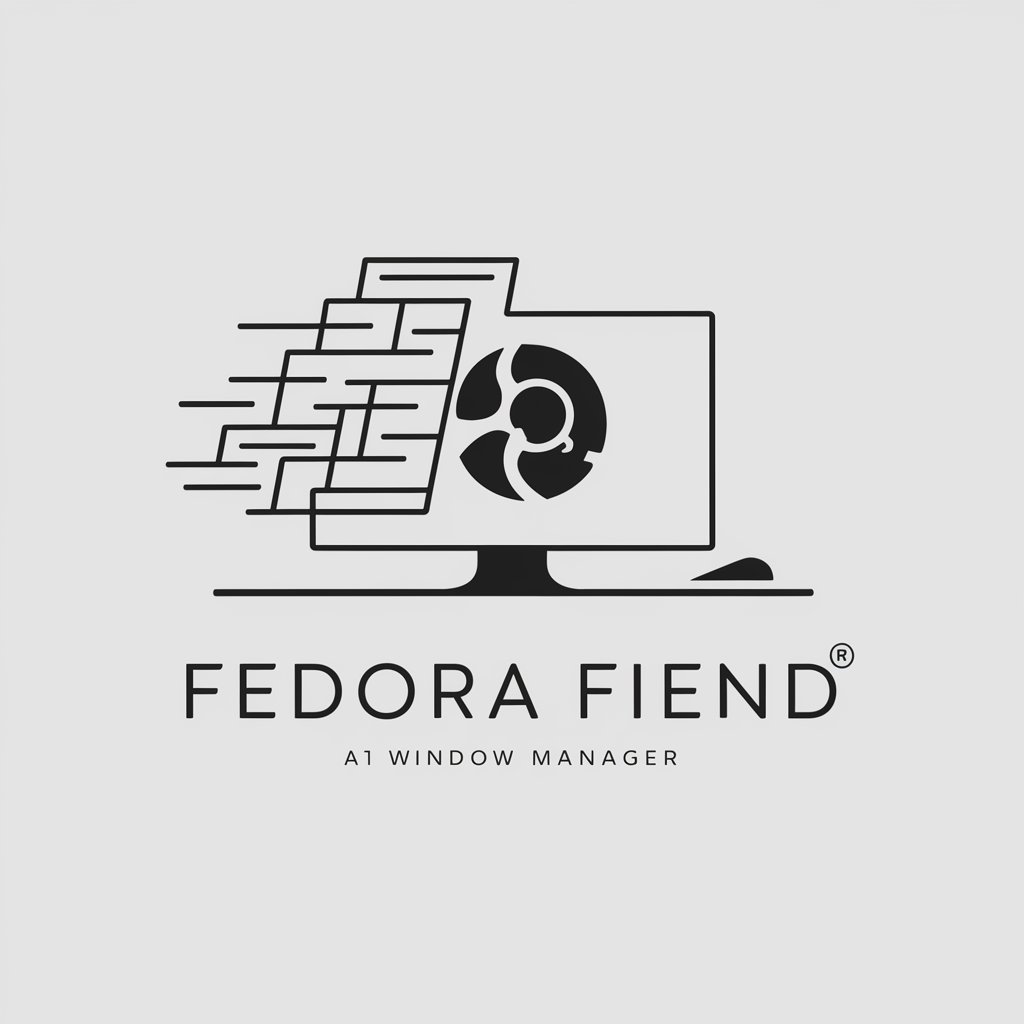Fedora - Linux distribution for versatile use

Hello! I'm here for quick and accurate help with Fedora Linux and GNOME. Ask away!
Empower Your System with AI-Driven Fedora.
How to resolve Fedora software dependency issues?
Best GNOME extensions for productivity in Fedora?
Steps to secure a Fedora system effectively?
Updating drivers on Fedora: What's the process?
Get Embed Code
Introduction to Fedora
Fedora is a robust, open-source Linux distribution sponsored by Red Hat, designed with a focus on innovation, security, and flexibility. It serves as both a testing ground for new technologies and a stable operating system for daily use. Fedora adheres to the 'upstream first' philosophy, meaning that it prioritizes contributing changes to upstream projects, ensuring that enhancements benefit the broader open-source community. This design purpose is evident in its regular release cycle, which ensures that users have access to the latest software while maintaining a balance between cutting-edge features and stability. A typical scenario where Fedora shines is in software development environments. For example, developers who require the latest libraries and tools can leverage Fedora's up-to-date repositories. Additionally, system administrators benefit from its SELinux (Security-Enhanced Linux) integration, which provides mandatory access controls, enhancing the security of the systems they manage. Powered by ChatGPT-4o。

Main Functions of Fedora
Regular Release Cycle
Example
Fedora releases a new version approximately every six months, ensuring that users have access to the latest features and security updates.
Scenario
A software developer who needs the latest compiler and libraries for building modern applications can rely on Fedora's regular updates to stay ahead in their development cycle.
Modular Software Repositories
Example
Fedora offers modular repositories, allowing users to choose between different versions of software, such as Python or Node.js, depending on their project requirements.
Scenario
A data scientist working on a machine learning project might need a specific version of Python for compatibility with certain libraries. Fedora's modular repositories make it easy to install the required version without affecting the system's overall stability.
Security Features
Example
Fedora includes robust security features like SELinux and firewall configuration tools out-of-the-box.
Scenario
A system administrator responsible for a server hosting sensitive data can use Fedora's SELinux policies to enforce strict access controls, reducing the risk of unauthorized access or data breaches.
GNOME Desktop Environment
Example
Fedora Workstation ships with GNOME as its default desktop environment, offering a clean and user-friendly interface tailored for productivity.
Scenario
A user who prioritizes a seamless and efficient desktop experience for everyday tasks like browsing, document editing, and multimedia can benefit from the polished and integrated experience GNOME provides on Fedora.
Fedora Spins
Example
Fedora Spins are alternative versions of Fedora featuring different desktop environments or specialized software collections.
Scenario
An artist might choose the Fedora Design Suite Spin, which comes pre-loaded with tools like GIMP and Inkscape, providing an environment optimized for graphic design tasks.
Ideal Users of Fedora
Developers
Fedora's cutting-edge software stack, regular updates, and extensive language and toolchain support make it an ideal choice for developers who need to stay current with the latest technologies. Its modularity allows developers to experiment with different software versions, which is crucial for testing and development purposes.
System Administrators
System administrators benefit from Fedora's focus on security and stability. With features like SELinux, firewalls, and automatic updates, Fedora provides the tools necessary to maintain secure and reliable systems. Fedora's alignment with Red Hat Enterprise Linux (RHEL) also makes it a good testing ground for admins managing RHEL environments.
Open Source Enthusiasts
Fedora is a strong choice for users who are passionate about open-source software and contributing to upstream projects. Its community-driven development process and adherence to free software principles attract users who want to be at the forefront of open-source innovation.
Desktop Users Seeking Innovation
For users who want a modern and polished desktop experience, Fedora Workstation with GNOME provides a user-friendly environment with access to the latest features and improvements. Its focus on innovation makes it a go-to option for users who enjoy experimenting with the newest technologies.

How to Use Fedora
Visit yeschat.ai
Access yeschat.ai for a free trial with no login required, eliminating the need for ChatGPT Plus subscriptions.
Download Fedora
Go to the official Fedora website and choose the appropriate version for your system, such as Workstation for desktop use or Server for server deployment.
Create Bootable Media
Use tools like Etcher or Fedora Media Writer to create a bootable USB drive from the downloaded ISO file, preparing your system for installation.
Install Fedora
Boot from the USB drive and follow the guided installation process to set up Fedora on your machine. Select your preferred partition scheme, language, and software selection.
Customize and Optimize
After installation, update your system, configure additional software repositories, and customize your environment with themes and extensions for an optimized experience.
Try other advanced and practical GPTs
Fedora Fiend
Master Fedora with AI-Powered Assistance

Fedora the Explorer
Design Your Dream Fedora with AI

Optimist Insight
Empowering minds with AI-driven optimism.

Optimism GPT | $OP
Navigating Blockchain with AI

Poetic Optimist
Bringing Whimsy to AI Conversation

Optimism today
Brighten Your Day with AI-Driven News

Timmy the Brainy
Empowering Creativity with AI

Travel Agent Mommy (TAMMY)
Your AI-powered travel companion

Tammy the Tow Truck Operator
Power Your Tow with AI

Sammy
Empower your interactions with AI

Tammy Silva
Empowering Your Career Globally with AI

Sammy
Empowering Children's Growth with AI

Common Questions About Fedora
What is Fedora?
Fedora is a popular Linux distribution developed by the Fedora Project and sponsored by Red Hat. It focuses on innovation, integrates the latest technologies, and provides a secure and user-friendly environment.
How do I update Fedora?
To update Fedora, open the terminal and run `sudo dnf update`. This command checks for the latest software updates and installs them. It's recommended to regularly update your system for security and performance improvements.
Can I run Fedora on older hardware?
Yes, Fedora can run on older hardware, but performance may vary depending on system resources. Consider using a lightweight desktop environment like XFCE or LXQt for better performance on older machines.
How can I install software on Fedora?
Software on Fedora can be installed via the Software Center GUI or using the command line with `dnf`, Fedora's package manager. For example, `sudo dnf install [package_name]` installs the desired software package.
Is Fedora suitable for development?
Absolutely! Fedora provides a robust platform for developers with the latest compilers, libraries, and tools. It supports multiple programming languages and offers a variety of development environments.
